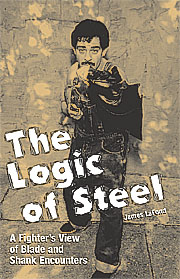“It is fascinating how fragile our infrastructure is. The recent rains in North Carolina will require changes in topographical maps. It reminds me of Japanese land management, which requires precise study of water flow patterns. Of course, as we see weather patterns which we don’t have experience with in our brief social memory, thought of Velikovsky comes to mind, when he wrote that “Saturn sends the rains” in relation to the Great Flood. Those kinds of civilization ending magnitudes, well, even thinking about it is daunting and, obviously, not much but massive stone work is ever left behind. From your travels, what have you observed concerning potential mid-scale hydraulic change in modern infrastructure.”
-Lynn, from an editorial prompt
…
In terms of what we make, exposure seems to be a big risk factor. Exposure to wind, such as the wide boulevard known as Northern Parkway I travel on. Portions of this avenue are cut along old land creases. Two years ago a tornado blew down this street as if it were a spinning top funneled down a toy race track, down the path of least resistance. Wide roadways seem to be more prone to disaster. These are not only exposed, but are paths of least resistance that are wider and longer than most natural features. These are also not made with stone, but with sticky gravel, oiled dirt in spots, various grades of concrete. These also serve as sewer vectors and storm drains, inviting the rains.
You are best served living along a narrow street that winds and is surfaced in brick.
Train tracks and beds actually hold up much better. These are made of stone, are cross hatched with beams called “ties” and iron rails. Additionally, railways are much more narrow than parallel roads. The side street I live on here, the road surface itself, is slightly wider than a railway that services nationwide traffic. Railroad beds have also been raised, where roads are painted on the landscape, cut through, carved out and sunken. Where railroads cut through, they do so with rock, not into soil banks. Interstates did use this cut process, which is so much uglier than rail, because one lane of a 4 to 12 lane highway is wider than both rail tracks, let alone one. A more narrow, stone cut does less to catch, funnel and intensify wind and flood than wide swaths of harder and therefor slicker, faster surfaces. Also, roads are made steeper than rails, as the train must climb gradually, wind like a river, and behave more naturally and less intensely.
My amateur observations, surely have engineering treatments that I do not understand. I simply note that fast built ways encourage speed of travel for vehicles, winds and water.
Trees are removed more completely for roads than for railways. Also, new developments, due to their erection having to do with making money, not making long term living spaces, built for 30 years maximum habitation, are dozed quickly. The old area of Baltimore I live in at the moment was dozed into lanes as well, going cross ways to various natural drainage patterns. But, these homes were built of brick, with concrete pit basements. Even as these places become ruins and the basements fill to become cisterns, then the brick walls implode and fill the basements, new rocky ridges will have been made.
By contrast, modular homes parked or slapped together
in quick dozed teardrop cuts, have no mature trees between structures, no root system to slow mud floods and prevent mudslides, and are not cut into rock. Quick building of meet-puppet sheds precludes cutting into rock. As insane as coastal sky scraper building is, with 3 to 10 levels of basements only kept from flooding by massive power outlays, side hill mud pan construction on the back sides of soil covered mountains across the country, seem like advertisements for the next Noah movie. When we see the backside of a hill being dozed into mudslide channels, before ultra light one- to two- generation housing is slapped up, and then oil roads are painting on, we realize that this is temporary.
The architects of our fleeting civilization envision the housing of today being quickly overgrown with weeds, [1] forests coming back, and then nature preserves cultivating. The rocky, stone and brick ruins of antiquity often remain, as those were expressions of community, stony attempts at continuity. Only an elite few are envisioned as remaining to enjoy the fruits of a rejuvenated earth after she has been pillaged of her rare earths to erect something sustainable for the human life lines that matter. Most of us are merely the wick and the tallow that feeds the flame kept by our masters; a flame shimmering so that the demons that rule us might take aim at a renewing paradise where they are god stalking among the garden and what remains of us is the mere urine expelled after the drinking of our sorrow for their wicked pleasure the night before.
The plan was always to return North America to its natural state, or power lines would have never bee run above ground, let alone hung under angry skies.
Notes
-1. Quick growing weeds, imported from Japan, I think, are used in Southeastern America to reclaim cheap construction.











